Bears, lions, fish, amphibians, birds, fantastic creatures: there are many and of various species of animals that can be found depicted in sculptures, paintings or objects in the lands of Siena, or of which traces remain that go back even to prehistoric times. Let us try to draw here a real itinerary to be able to admire an all-Sienese bestiary, on the trail of fantastic and non-fantastic animals ranging from Prehistory to the present day.
Our journey to discover animals begins at the Civic Museum for Prehistory of Mount Cetona, where the skeleton of a cave bear, otherwise known as the cave bear, found in Grotta Lattaia on the slopes of Mount Cetona, is preserved. It is now one of the museum’s main protagonists, but more than 45,000 years of evidence of the presence of prehistoric man in the Sienese Valdichiana are preserved here, materials documenting the ancient natural environment and Prehistory of the area: from the remains of a mammoth to flint tools used by Neanderthal man, to pottery, metal, bone and stone objects from the Neolithic and Bronze Age.
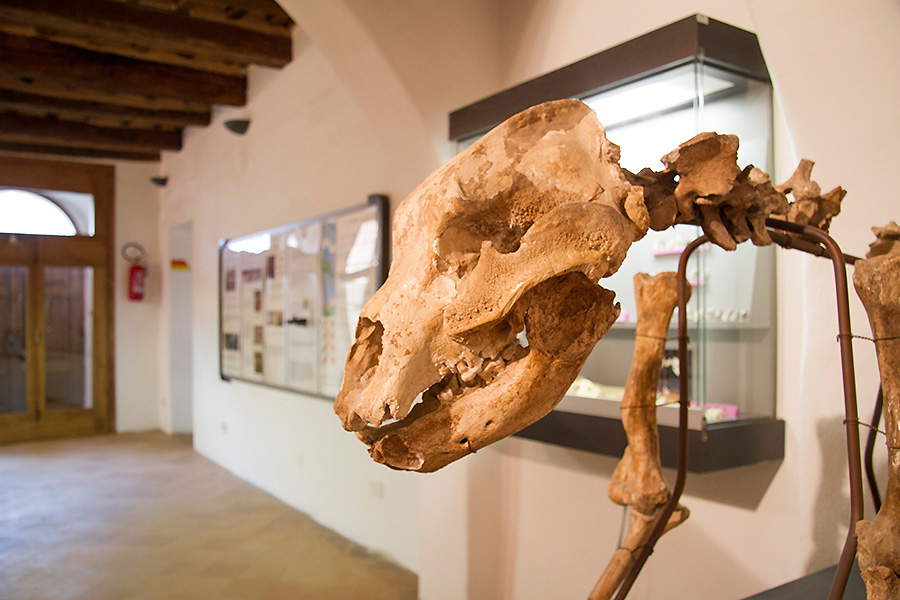 The
TheFrom Prehistory we go to the 7th-6th centuries B.C. with the serene stone feline head preserved at the Archaeological Museum of Sienese Chianti in Castellina in Chianti. It is a lion’s head, with half-open jaws, carved in sandstone, which was found in the southern tomb of the Montecalvario Tumulus, defending the tomb. Sculptures of royal or monstrous animals whose task was to protect aristocratic tombs were particularly common in the Vulci countryside.
The head probably served as a base for another element, perhaps a wooden column, because of the presence of a cylindrical cavity on the upper face, provided with two through holes. The feline head does not refer to the Etruscan sphere, but rather to Near Eastern influence since it is similar to the first large stone sculptures of Etruria, such as those from Casale Marittimo, Vetulonia, Cerveteri, and, beyond the Apennines, the Bolognese stelae.
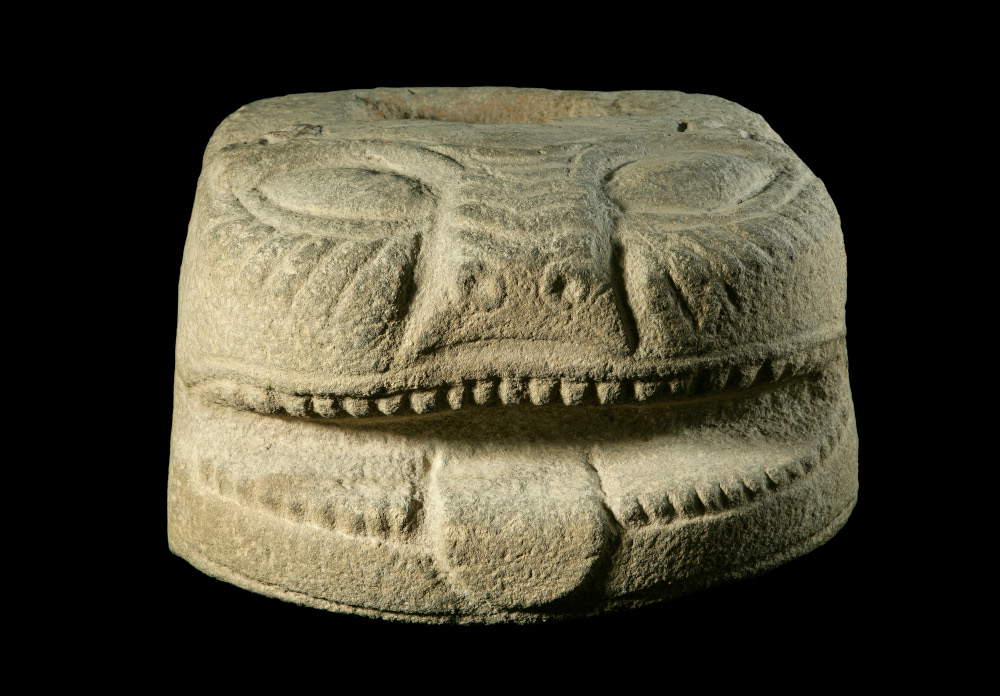
Fantastic creatures are encountered at the Archaeological Museum of Murlo, where a Gorgon-head antefix is kept, which served mainly to protect the wooden parts of roofs from rainwater, as well as having deep religious significance, since it warded off evils and propitiated the gods. This Gorgon with a gaping mouth, large eyes, hanging tongue and sharp teeth welcomed all who came to the Etruscan princely abode at Poggio Civitate. Charun, the Etruscan counterpart of Charon who, with flaming hair and a spirited gaze, guided souls to the Afterlife by leading the infernal quadriga drawn by two lions and two griffins, is instead the protagonist of the Tomb of the Infernal Quadriga, a masterpiece of Etruscan art from the 4th century B.C.C. discovered in Sarteano in 2003 and a 1:1 scale copy is preserved in the Sarteano Civic Archaeological Museum. On the walls of the Tomb is depicted a true hellish journey among monstrous animals and demons: waiting for Charun are two deceased lying at a banquet; the creature will lead them to Hades, a world populated by monsters, such as the three-headed serpent wrapped in a large coil and the hippocampus, an animal half horse and half fish. Also in Chiusi, at the Museo Civico La città sotterranea, can be seen urns carved in alabaster or molded in terracotta: the lid depicted the deceased semi-recumbent at a banquet, while mythological scenes or images related to the journey to the underworld were carved on the case, including winged monsters, gorgons and farewell scenes.
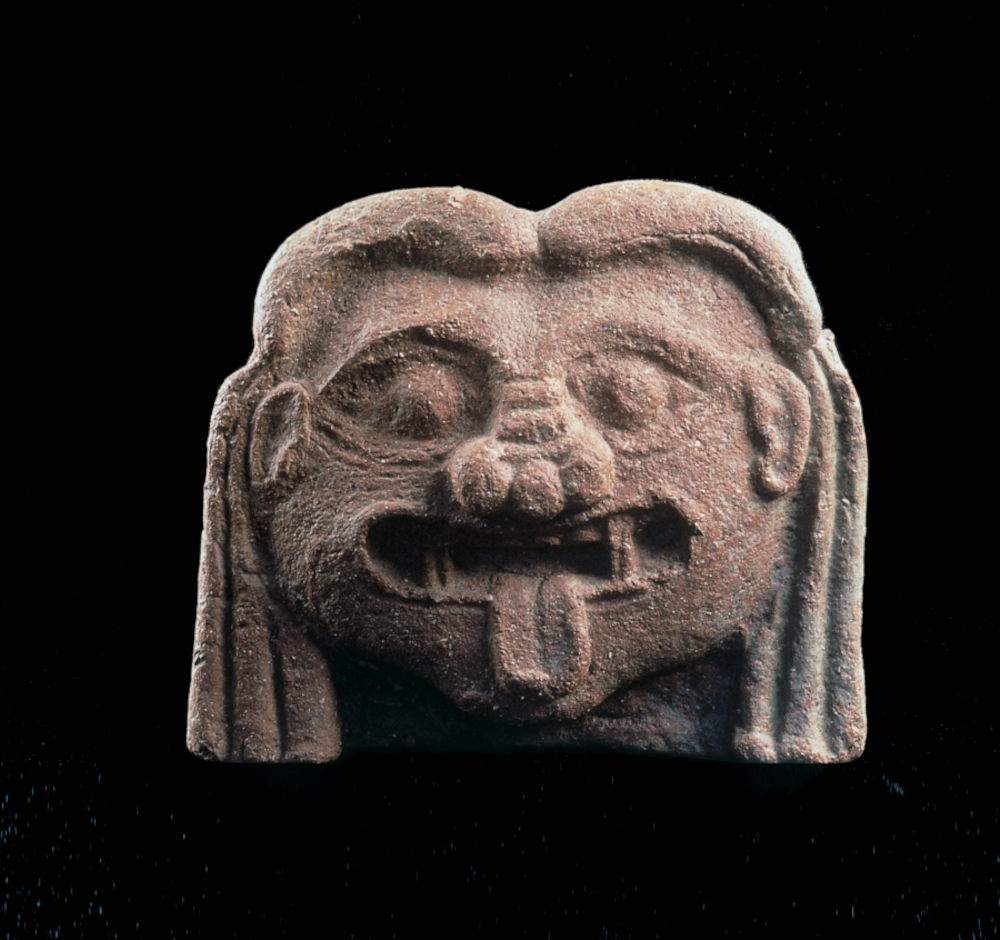

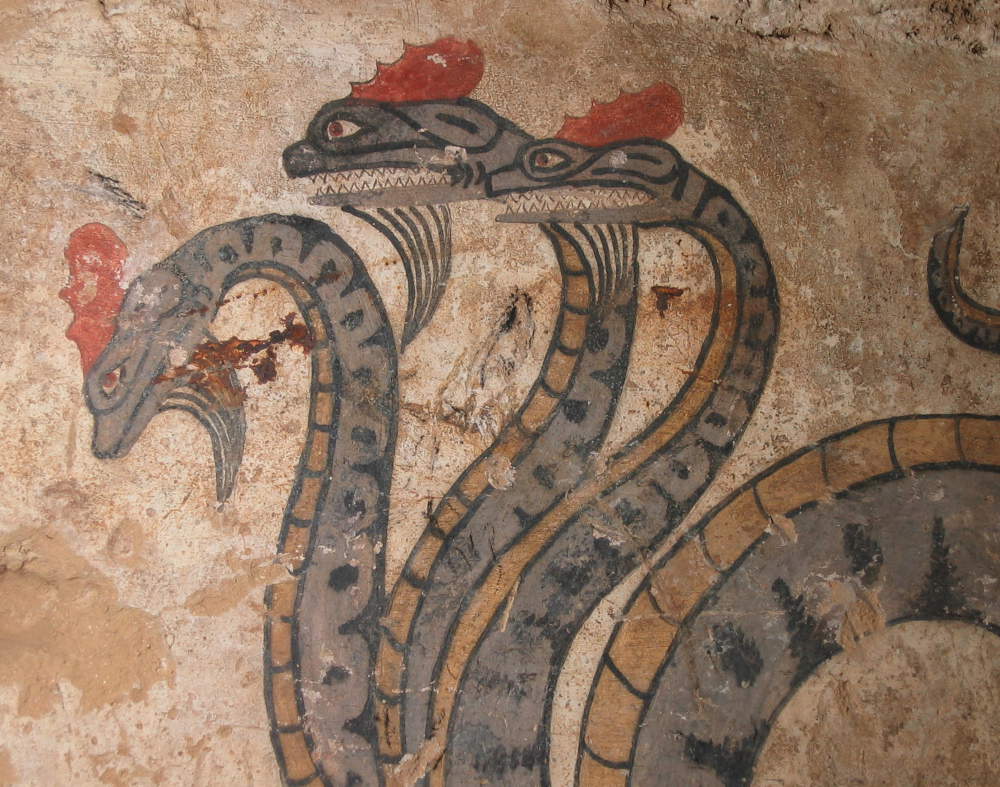
From fantastic and monstrous creatures we return to real animals at the Natural History Museum of the Accademia dei Fisiocritici of Siena, located in the former Santa Mustiola convent that belonged to the Camaldolese order. The museum venue has more than 140 marine mammal specimens, only a fraction of which are on display, including a mounted skeleton of a 15-meter-long fin whale, nicknamed Nereo by the museum’s online community, that was recovered in Piombino. Also preserved here is an extraordinary zoological collection that includes invertebrates, insects, mollusks, fish, amphibians, birds, mammals, and even some “freaks of nature,” such as the two-headed lamb and the three-legged hen. Then there are many naturalized vertebrate specimens, skeletons, alcohol specimens, mollusk shells, and insect boxes; and again, about three thousand bird specimens, nearly seven hundred specimens referable to about one hundred and fifty mammal species with specimens from all continents, rarities, and one extinct species. The new materials acquired or prepared do not come from captures, but only from judicial seizures and the recovery of specimens that have already died, and the presence of a taxidermy laboratory ensures the preparation, maintenance and restoration of all specimens, as well as study material for researchers at the University of Siena. The museum continues to do research: it now has two citizen science projects under its belt to survey local species.
Examples of painted animals can be found instead at the Museum of Sacred Art of the Val D’Arbia in Buonconvento, for example in Girolamo di Benvenuto’sAnnunciation among Saints: here a peacock is depicted. Sacred to the goddess Juno, the peacock appears very early in early Christian art as a symbol of spiritual rebirth and resurrection; in fact, according to ancient beliefs, it was believed that it lost its feathers in autumn, only to regain them, even more beautifully, in spring, and that its flesh never decayed after death. That is why it is a symbol of the incorruptibility of the body and eternal life. However, it is in the Civic Museums of San Gimignano that we can admire a beautiful bestiary painted over the centuries: bears, dogs, horses, magpies, swallows, owls, goldfinches, fish, and pigs appear along the halls of the Civic Museums. In the Sala di Dante in the Palazzo Comunale, right next to the bust of the Supreme Poet, a white bear is depicted, among the first and few documents testifying to the presence of this animal in Europe, which until then, in the last decades of the thirteenth century, had never been documented. However, the symbolic significance of this depiction should also be emphasized because it has long been considered the king of animals, an object of veneration and a symbol of strength and courage, but also a symbol of sins and vices (lust, gluttony, sloth) and for this reason an object of hunting. The same cycle of frescoes by Azzo di Masetto in the Palazzo Comunale depicts dogs, particularly greyhounds: often used in race hunting, greyhounds are depicted alongside nobles as a symbol of chivalrous virtues. Different, however, are those depicted in the San Lorenzo in Ponte fresco (1413) dedicated to the Triumph of Death: small dogs at play surrounded by ladies in a more restricted setting, a garden (in this case the dog becomes an attribute of the domus and the noblewoman, a symbol of marital fidelity). In the Galleria d’Arte Moderna e Contemporanea "Raffaele De Grada," Giannetto Fieschi’s pictorial cycle, Il pericolo - Coppia che cammina n.1, once again sees the dog as the protagonist: it is portrayed as movement and as sound, while barking, and an elderly couple is mauled by the dogs that were supposed to protect them; in this case, therefore, it is the very ideals of fidelity that turn against the human being.
Also in the frescoes by Azzo di Masetto in the Palazzo Comunale, the warlike use of the horse can be seen in the scene of the Tournament of Knights; the same animal is then depicted on an alabaster urn case with journey to the underworld from the second century B.C. preserved in the Archaeological Museum, where the horse becomes co-star of the scene. Finally, also at the Museo di Palazzo Corboli in Asciano we come across an owl, which seems to be watching over theAdoration of the Shepherds by the persuasive 15th-century painter Pietro di Giovanni Ambrosi: an animal with a double aspect, a symbol of wisdom and knowledge and at the same time of darkness and death, precisely foreshadowing the fate of the Christ child. Many birds are depicted inside the Palazzo Comunale, including an owl with two magpies on the door of the Podestà’s room, frescoed by Memmo di Filippuccio in the early fourteenth century; magpies are still found in the coats of arms of families or in Dante’s Room. And again, the goldfinch, a symbol of the Passion of Christ, can be recognized in two paintings in the Pinacoteca, one by Jacopo da Firenze and the other by Taddeo di Bartolo, both Madonnas with Child, while the swallow, whose song recalls that of the victim pleading for protection, is seen in the Majesty by Francesco di Ser Cenni at the Palazzo Comunale and in the Madonna and Child by the same author in the Church of San Lorenzo in Ponte, both circa 1413, in Neri di Bicci’s Madonna and Child (1460-70) and in Pier Francesco Fiorentino’s Madonna and Child (circa 1477) both in the Palazzo Comunale.
A dolphin is painted above the highest tower in Taddeo di Bartolo’s Storie di San Gimignano (1401) and finally the pig in Pier Francesco Fiorentino’s Madonna and Child between Saints Bartholomew, Anthony Abbot and the donor Fra’ Tommaso Cortesi (c. 1490), in Bartolo di Fredi’s fresco in the Sala di Dante (1366-67), in the Maestà by Lippo Memmi (1317) and in at least two paintings in the Pinacoteca where the piglet is depicted in a vexatious attitude with its paw raised at the feet of Saint Anthony Abbot.
In short, a truly rich bestiary awaits us in the museums of the Lands of Siena, a cue for an itinerary suitable for families and even the little ones; a treasure hunt that holds unexpected surprises and fun.

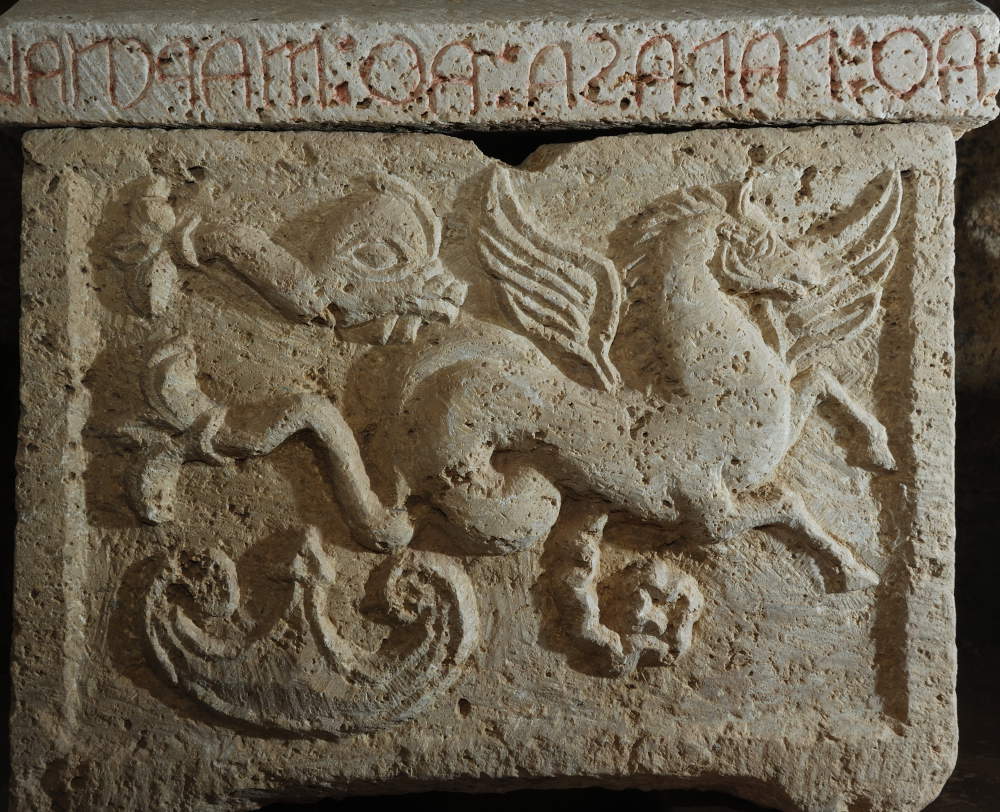
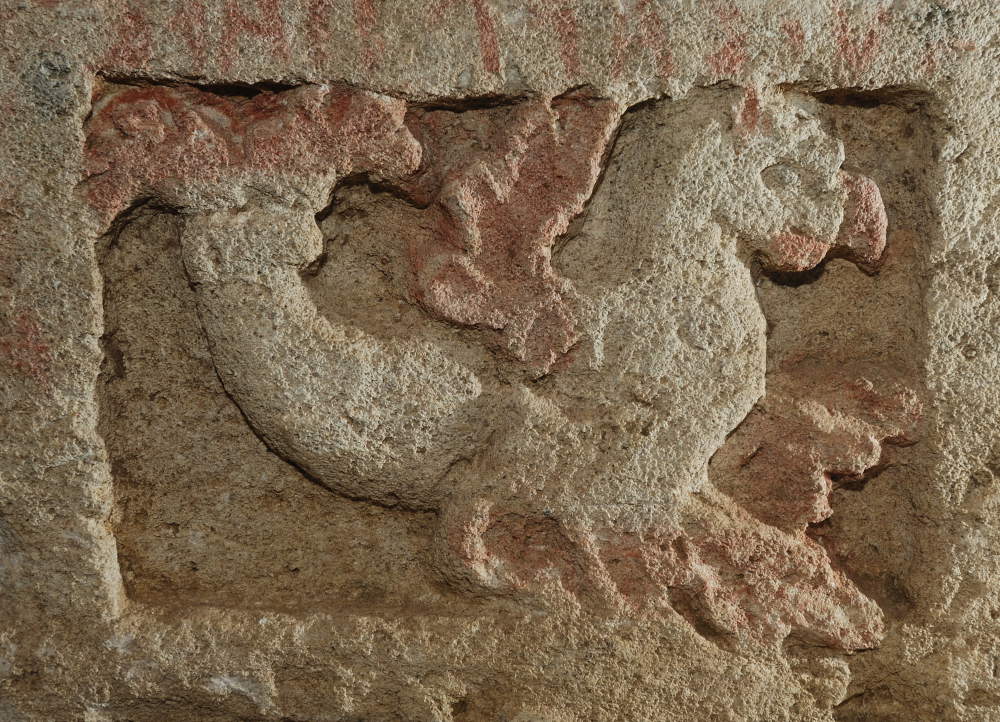 Carved case with mythological
Carved case with mythological
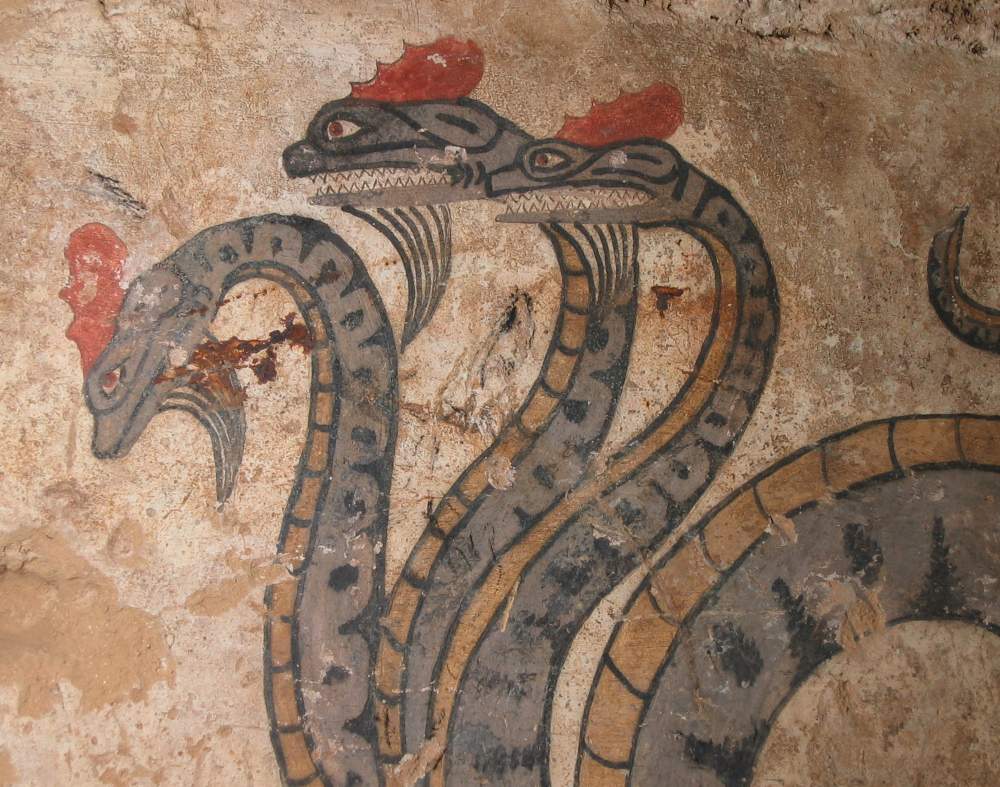 |
| Real and fantastic animals in the lands of Siena: itinerary to discover the Sienese bestiary |
Warning: the translation into English of the original Italian article was created using automatic tools. We undertake to review all articles, but we do not guarantee the total absence of inaccuracies in the translation due to the program. You can find the original by clicking on the ITA button. If you find any mistake,please contact us.